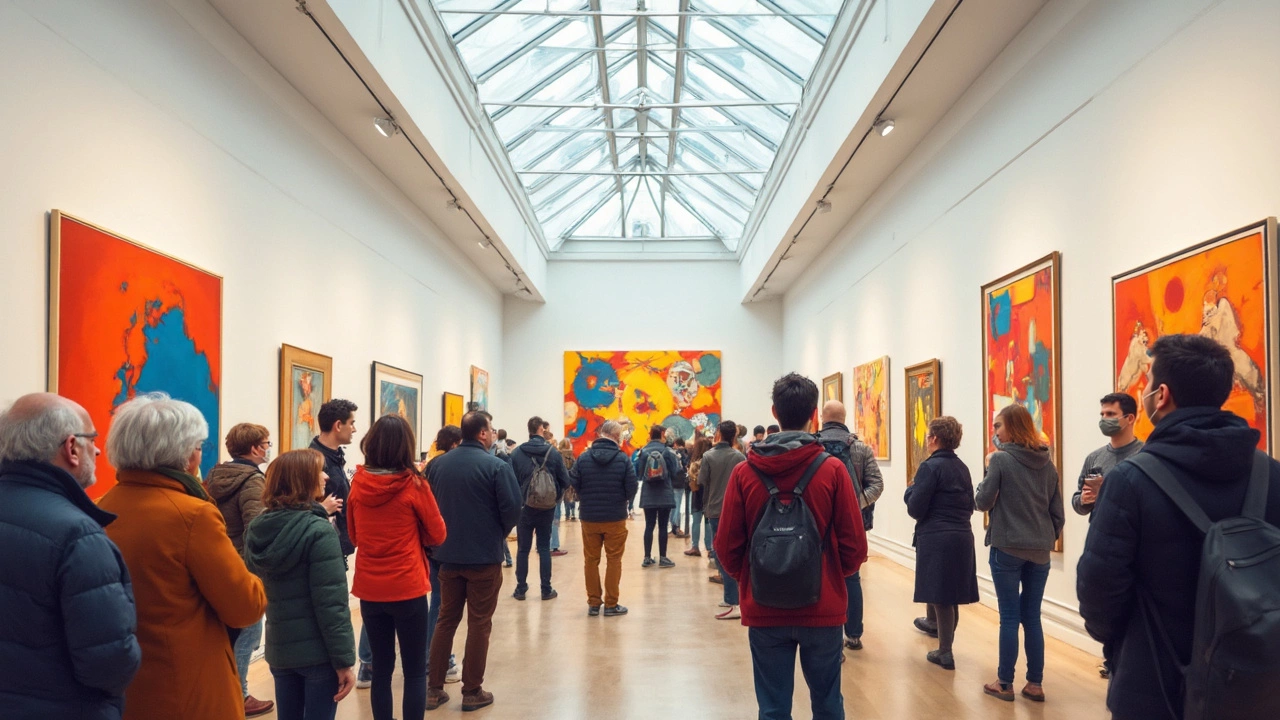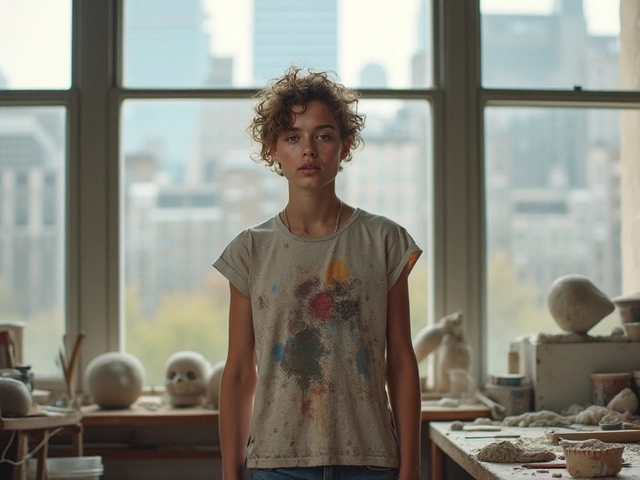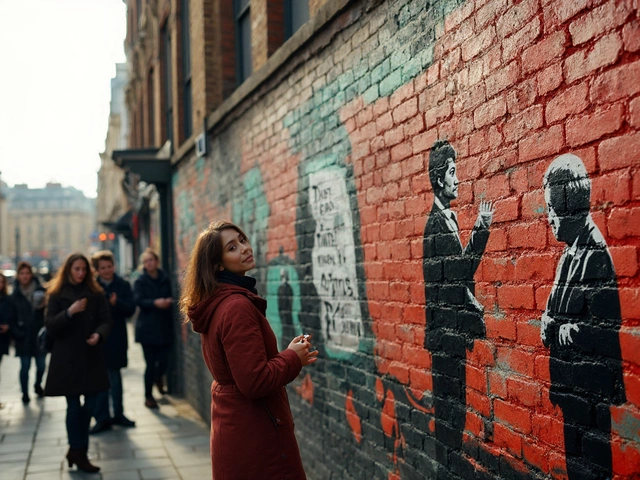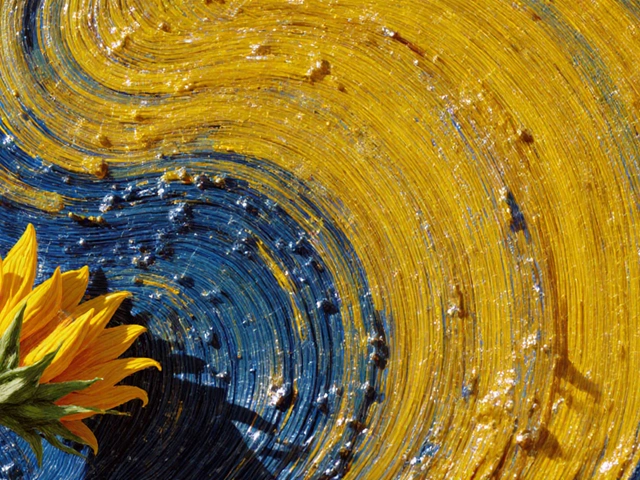Ever stood in front of a big splash of paint on canvas and thought, “What am I supposed to see here?” You’re not alone. Modern art walks right past traditional rules, so it can seem random or even unfinished. But here’s the thing: it’s all about shaking up how you think and feel, not about showing off a perfect picture.
Some folks see modern art as a joke, others think it’s genius. That wild divide is the secret sauce—modern art invites you to react. People connect with the freedom, the weird ideas, or even the controversy. In fact, studies show that strong feelings (even confusion!) mean your brain’s engaged, and that’s what a lot of these artists wanted all along.
- What Makes Modern Art Different?
- Why People Love and Hate It
- How to See More in Modern Art
- Tips for Enjoying Modern Art Galleries
What Makes Modern Art Different?
The first thing people notice about modern art is it doesn’t try to copy real life. Unlike older stuff—where artists focused on portraits or perfect landscapes—modern artists play with bold colors, wild shapes, or even just a single line on a white canvas. This freedom started showing up in the late 1800s and really kicked off with movements like Impressionism, Cubism, and Abstract art.
A lot of modern art broke old habits on purpose. Pablo Picasso wanted you to see people from a new angle with Cubism. Jackson Pollock made entire paintings out of drips and splatters. Mark Rothko’s huge color blocks make you feel something, even if you can’t say what it is. This shift wasn’t just about new looks—it was about new ways to share ideas and feelings, even personal rebellion.
Some people wonder if just anyone could make modern art. Here’s the secret: the idea, process, and intention matter just as much as the final product. Andy Warhol’s Campbell’s Soup cans weren’t really about soup—they asked you to think about fame, money, and everyday things we ignore. The meaning doesn’t always slap you in the face. Sometimes, it’s about what you bring to the art, not just what the artist left on the canvas.
If you’re curious how much modern art has taken over, check out this quick look at modern art museum visitors worldwide. These spots get millions of curious folks each year, proving this style keeps pulling crowds:
| Museum | Annual Visitors (2023) |
|---|---|
| Museum of Modern Art, NY | 2.3 million |
| Tate Modern, London | 5.7 million |
| Centre Pompidou, Paris | 3.4 million |
So what makes modern art stand out? It plays by its own rules, asks you to think, and makes you part of the experience. That’s a big change from the old days, and that’s why it sparks so many strong opinions.
Why People Love and Hate It
Walk into any modern art museum and you’ll hear everything from, “That’s amazing!” to, “My kid could do that.” There’s no middle ground, and that’s exactly what makes modern art so interesting. People have strong opinions, and it often comes down to what they expect to see in art galleries.
Some folks love modern art because it breaks the rules. You don’t need years of art history to have an opinion. There’s room for personal meaning—viewers can decide for themselves what’s going on in a painting or sculpture. Famous artists like Jackson Pollock or Mark Rothko tossed out realism and pushed pure emotion and bold ideas. Their work pulls you in because it doesn’t give all the answers, and that makes things exciting.
But on the flip side, plenty of people just don’t “get it.” Some visitors expect detailed scenes or clear subjects, like what you see in classic art. Instead, they find splatters, blocks of color, or shapes that look random. People get frustrated because they think anyone could make it. There’s even a study from the University of Vienna showing a split: about 52% of casual museum goers say they struggle to see the point in abstract art at all.
Money also plays a big role. Headlines pop up every few years about modern pieces selling for millions, like a banana taped to a wall or a plain red canvas. This makes some folks question if the art world’s serious or just hyping up the price tag. But collectors aren’t just paying for the work—they’re paying for the story, the reputation, and the wild reactions.
| Modern Art Reaction | Percentage of Gallery Visitors (2024 Survey) |
|---|---|
| Loved it, felt emotional | 36% |
| Felt confused, not sure what to think | 44% |
| Didn't like it, found it pointless | 20% |
So when you’re standing in front of the next puzzling piece, know that loving or hating modern art is part of the experience—the strong back-and-forth is what keeps the conversation alive. If it gets you talking, it’s doing its job.
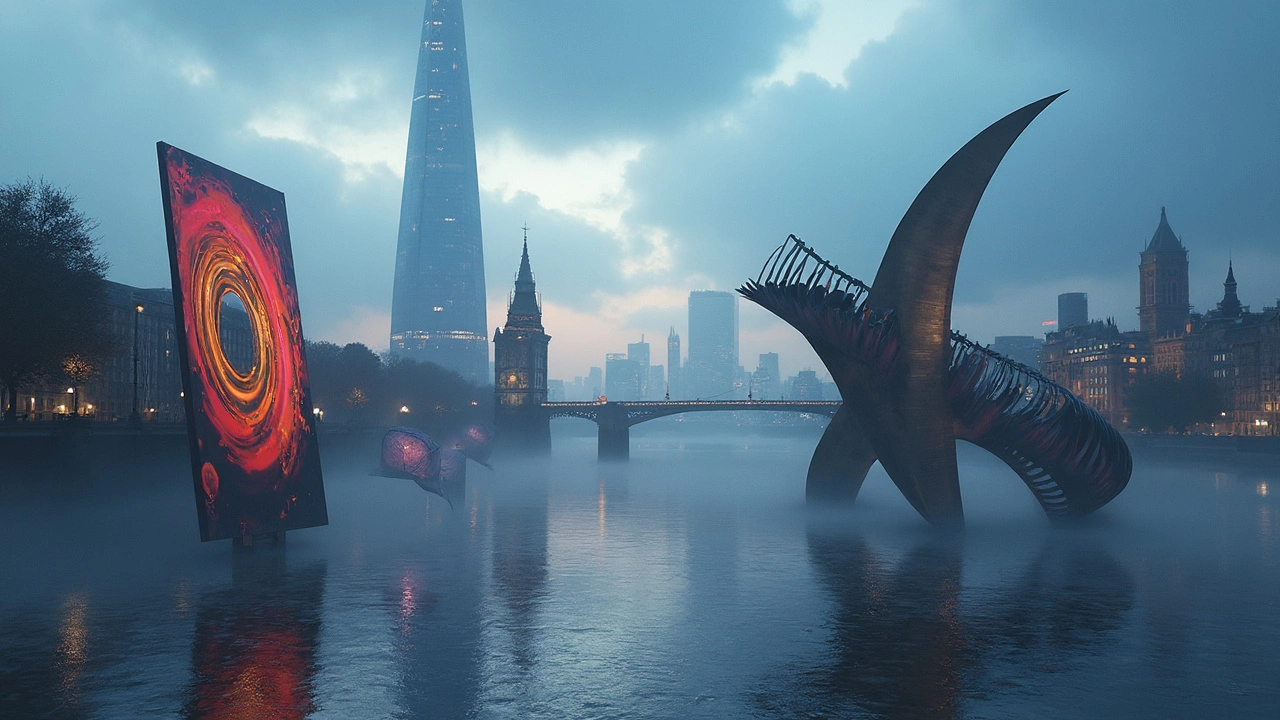
How to See More in Modern Art
It’s easy to walk past a piece of modern art and just shrug or say, “I don’t get it.” But with a little effort, you can pull out more meaning than you’d expect—even from the weirdest-looking paintings or sculptures. The goal isn’t to crack a secret code. It’s more about noticing details and being open to new ideas.
Here are some simple ways to get more out of modern art:
- Ask what you feel, not just what you see. Modern art isn’t always about skillful drawing. Sometimes, it’s about triggering a gut reaction—whether that’s confusion, anger, joy, or anything in between. Don’t ignore your first feeling. That’s valuable info.
- Check out the title and background. Most pieces have a name or a blurb nearby. These little clues can totally shift how you view the work. For example, Picasso’s “Guernica” looks wild at first, but knowing it shows the horrors of war suddenly makes all those shapes and faces click.
- Look for what’s missing or changed. A lot of abstract art is about “less is more.” Some artists strip away details or twist familiar objects to challenge your brain. Ask, “Why did the artist leave that out or mess with that shape?” It can lead to some fun discoveries.
- Put yourself in the artist’s shoes. Modern artists aren’t always trying to please everyone. Sometimes, they want to shock you or make you question things you’ve never thought about. Imagine you’re the creator—what would you want viewers to walk away thinking?
- Compare similar works. If you spot two pieces that look alike, check out what makes them different. You’ll start to notice signature styles or repeated ideas, like Mondrian’s strict grids or Jackson Pollock’s paint splatters. It becomes kind of like solving a puzzle.
Here’s an interesting stat to keep in mind: according to research published in 2022, museum visitors who spent just five minutes with a single piece of modern art reported feeling twice as connected to the work, compared to those who did a fast walk-through. So, slow down when you see something strange or vivid—the extra time really does help.
Getting the hang of modern art takes a bit of practice, but the more you try these steps, the more fun (and less frustrating) your visits to new art galleries will be.
Tips for Enjoying Modern Art Galleries
Walking into a modern art gallery can feel weird if you’re used to classic paintings. But even if you don’t “get” a piece right away, there are ways to actually enjoy your time—and maybe even appreciate what all the fuss is about.
- Don’t rush. Give yourself more time than you think you’ll need. Some modern pieces make no sense at first glance, but staring just a bit longer can totally flip your view. If a work grabs your attention, hang out with it. The average visitor spends less than 30 seconds per artwork—slow down and go against the crowd.
- Read the labels. Seriously, those little cards next to the artwork often give clues on what the artist had in mind. Sometimes they tell you about the time period, what was going on in the artist’s life, or even a quick quote that points out what to look for.
- Listen to your gut. You don’t have to know art history or special terms to react. Do you feel annoyed, curious, happy, or straight-up confused? That’s a big part of what modern art is about—making you feel something new. Trust your response.
- Try to spot patterns. Some artists repeat shapes or colors on purpose; some use weird materials like metal scraps or everyday trash. Asking yourself, “Why this color? Why this object?” gets your brain working the way the artist meant it.
- Use your phone for good. Take a quick pic of the art (if allowed) and Google it later if you’re really interested. Many galleries also offer free apps or QR codes that explain the works, sometimes with videos from the artists themselves.
- Start a low-key debate. If you’re at the gallery with friends, talk about what you all see. It’s common for people to have totally opposite takes on the same piece—that’s part of the fun in modern art.
Just for perspective, here’s how people typically interact with art in galleries:
| Gallery Type | Average Time Spent Per Artwork | Common Visitor Behavior |
|---|---|---|
| Traditional Art | 27 seconds | Standing quietly, reading labels |
| Modern Art | 12–32 seconds | Stepping back, debating, taking photos |
The more you let yourself react, talk about, or even question what you’re seeing, the more fun you’ll have. That surprise or confusion? That’s you actually engaging with modern art, and yeah, that totally counts as getting it.
